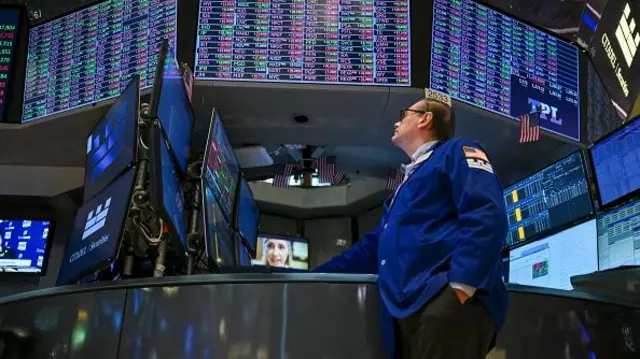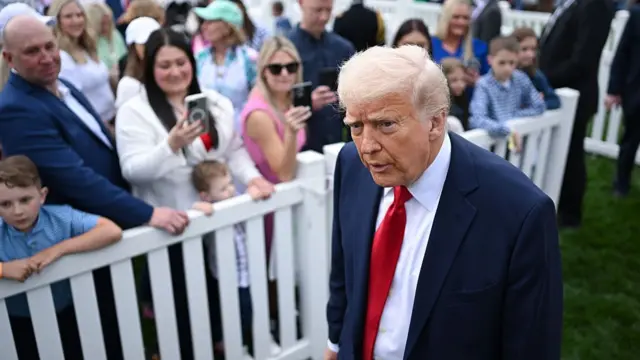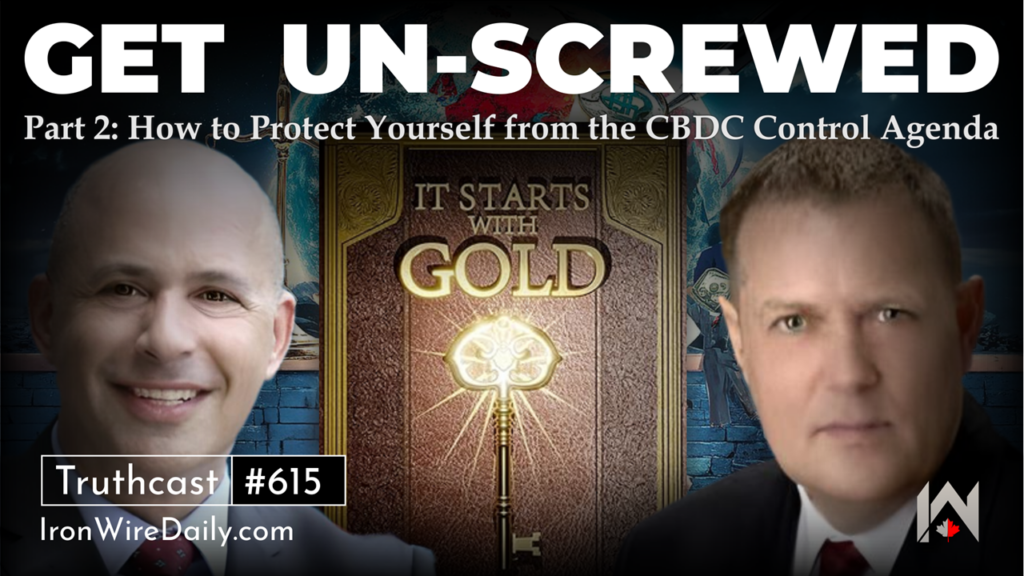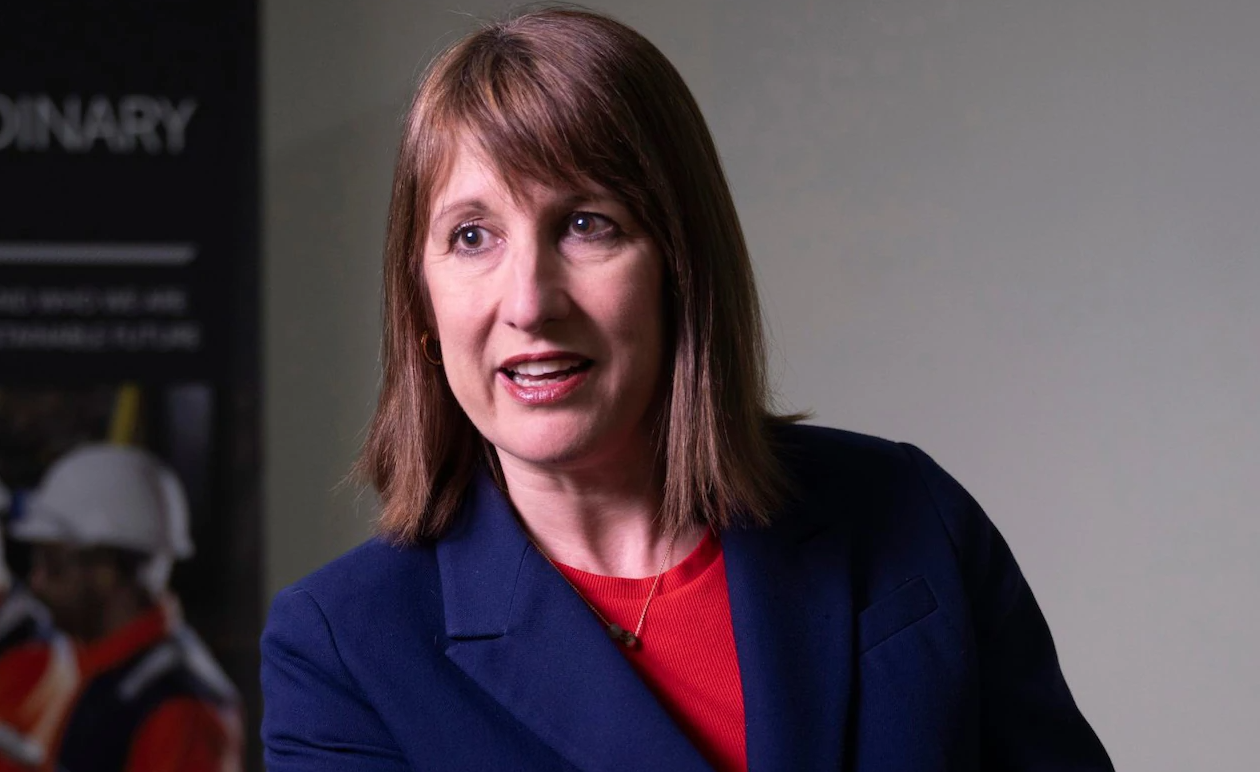US markets live: Gold hits record high as Trump’s attack on Federal Reserve boss Jerome Powell rattles markets
What could the IMF say about the global economy?published at 13:46 British Summer Time
 Image source, Getty Images
Image source, Getty Images
Ahead of the publication of today’s forecast by the International Monetary Fund (IMF), the organisation’s managing director Kristalina Georgieva said that while trade tariff uncertainty is “literally off the charts”, there would not be a global recession.
Speaking on Thursday, Georgieva said “our new growth projections will include notable markdowns, but not recession”.
“A better balanced, more resilient world economy is within reach. We must act to secure it,” she said.
Georgieva also called on Europe to cut down on “restrictions on internal trade in services” and “deepen” its single market.
She added that China needs to increase its social safety net so that there is less “precautionary saving”, and that the US government needs to reduce its debt.
Why is the International Monetary Fund so important?published at 13:28 British Summer Time
Faarea Masud
Business reporter
Amid all this market turmoil, in around half an hour’s time the International Monetary Fund (IMF) is expected to be releasing its closely-watched forecast on the global economy. But what isthe IMF and why is it so important?
The IMF is an organisation that tries to stabilise theglobal economy by:
- Tracking economic and financial events
- Advising its members on how to improve their economies
- Issuing short-term loans and assistance to countries who are struggling
Any country can join the IMF if it meets certain economiccriteria and gives a sum of money called a “quota subscription”. There arecurrently 190 member countries – though the richest give a largercontribution.
These quota subscriptions fund loans, which are given to membercountries that need funds.
It is often described as a “lender of last resort”. In times of crisis, countries look to it for financial assistance – although it has been criticised for having harsh conditions attached to its lending, such as forcing countries to reduce government borrowing.
Another day, another tariffpublished at 13:12 British Summer Time
 Image source, Getty Images
Image source, Getty Images
Speaking of tariffs, you could be forgiven for not keeping up with the latest announcements, but another eye-catching new import tax has been touted today.
The US has announced plans to impose tariffs of up to 3,521% on imports of solar panels from four South East Asian countries.
It comes after an investigation that began a year ago when several major solar equipment producers asked the administration of then-President Joe Biden to protect their US operations.
The proposed levies – targeting companies in Cambodia, Thailand, Malaysia and Vietnam – are in response to allegations of subsidies from China and the dumping of unfairly cheap products in the US market.
A separate US government agency, the International Trade Commission, is due to reach a final decision on the new tariffs in June.
Value of the dollar at lowest level in three yearspublished at 12:58 British Summer Time
Tommy Lumby
BBC business data journalist
The value of the US dollar remains at lows last seen more than three years ago, after it was hit by uncertainty surrounding Trump’s trade tariffs.
The US dollar index – which charts its value against a basket of other major world currencies – was at 98.4 by late morning on Tuesday. Apart from Monday, that’s the lowest it has been since March 2022.
The value of the dollar often rises during market turbulence because it’s seen as a safe asset to invest in when others are tumbling.
But the expected impact of tariffs on US economic growth and the cost of repaying government debt may have shaken that sense of security, at least temporarily.

Investors keeping close eye on US bondspublished at 12:37 British Summer Time
 Michael Race
Michael Race
Senior economics reporter
While the stock markets have been volatile, a lot of investors have been watching the US bond market closely.
The market is how the government borrows money. It sells bonds – essentially as an ‘I owe you’ – to raise money from investors, and in return it pays interest.
Dramatic moves for this market are rare, especially for the US, but following the introduction of tariffs the amount the US government has to pay to borrow money has shot up.
This is a sign of investors losing confidence in the world’s largest economy and seeing the US as a riskier bet than normal, and so demanding higher returns to lend money.
This almost never happens, because the US is an economic powerhouse and during times of stock market turmoil, investors generally rush to buy government bonds because they are seen as a safe place to invest their money. There is little risk.
That view is certainly being questioned.
Price of gold reaches record highpublished at 12:20 British Summer Time
Faarea Masud
Business reporter
Elsewhere, the price of gold hit a new all-time record high on Tuesday, breaking the $3,500 (£2,613) per ounce mark as investors seek out so-called “safe haven” assets.
Gold is seen as a safe investment during economically turbulent times.
With Donald Trump’s trade war, and recent falls in the stock markets, gold is seeing high prices as more people are interested in keeping their money protected in a solid investment.
What exactly has Trump said about the central bank chief?published at 11:59 British Summer Time
 Image source, Getty Images
Image source, Getty Images
The US markets plunging yesterday following US President Donald Trump’s criticism of the chair of the Federal Reserve, Jerome Powell.
Like the Bank of England in the UK, the Federal Reserve decides interest rates independently from the government.
But in a social media post, Trump called on Jerome Powell to cut interest rates “pre-emptively” to help boost the economy.
“There can be a SLOWING of the economy unless Mr. Too Late, a major loser, lowers interest rates, NOW,” he wrote.
The president’s intensifying clash with Powell, whom he named to lead the Fed during his first term, has added to recent market turmoil over tariffs. Powell has previously warned that Trump’s import taxes were likely to drive up prices and slow the economy.
Last week, the president publicly called for Powell to be fired, writing on social media on Thursday: “Powell’s termination cannot come fast enough.”
Such a move would be controversial – and legally questionable – given the bank’s traditional independence from the government.
Calmer markets across the rest of the worldpublished at 11:42 British Summer Time
 Michael Race
Michael Race
Senior economics reporter
After the losses in the US’s major stock exchanges yesterday, trading across the rest of the world has been a lot calmer.
In the UK currently, the FTSE 100 is trading up, albeit very marginally, while Germany’s Dax index and France’s Cac 40 are slightly down.
Most of the main stock indexes in the Asia-Pacific region ended the day subdued. Japan’s Nikkei 225 closed around 0.1% lower, while Hong Kong’s Hang Seng closed about 0.3% higher.
And while yesterday all three US stock indexes were down around 2.5%, extending losses seen so far this year, looking at the futures market ahead of the US markets opening at 09:30 EST (14:30 BST), things are looking up.
How far did the dollar and US stocks slip on Monday?published at 11:37 British Summer Time
 Image source, Getty Images
Image source, Getty Images
As we’ve just been reporting, while Trump intensified his attacks on Jerome Powell yesterday, both the dollar and US stocks plunged.
The S&P 500, which tracks 500 of the biggest US companies, fell roughly 2.4% on Monday. It has lost roughly 12% of its value since the start of the year.
The Dow Jones Industrial Average, meanwhile, dropped 2.4% – totalling about 10% so far this year – and the Nasdaq fell more than 2.5%. It is down roughly 18% since January.
Elsewhere, the dollar index – which measures the strength of the dollar against a set of currencies including the euro – fell to its lowest level since 2022.
US dollar and shares dive as Trump ramps up attacks on central bank bosspublished at 11:32 British Summer Time
 Image source, Getty Images
Image source, Getty Images
There’s a lot of talk about the US economy this Tuesday morning.
US stocks and the value of the dollar plunged again yesterday, as President Donald Trump continued to attack the head of the country’s central bank.
Trump urged Jerome Powell – who he called a “major loser” – to cut interest rates “pre-emptively” to help boost the economy.
And amongst all that, we’re expecting the latest growth forecasts for individual countries from the International Monetary Fund later this afternoon.
There’s a lot to unpack here, and we’ll be doing exactly that throughout the page – so stay with us.










